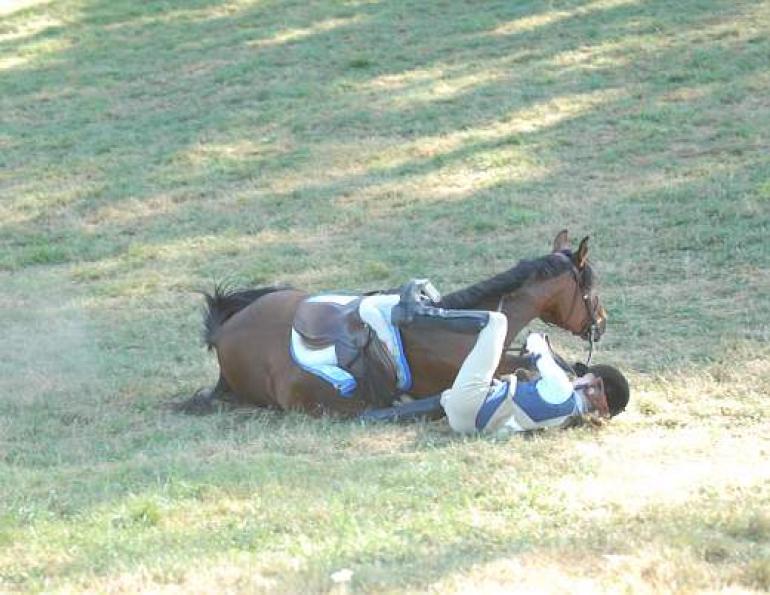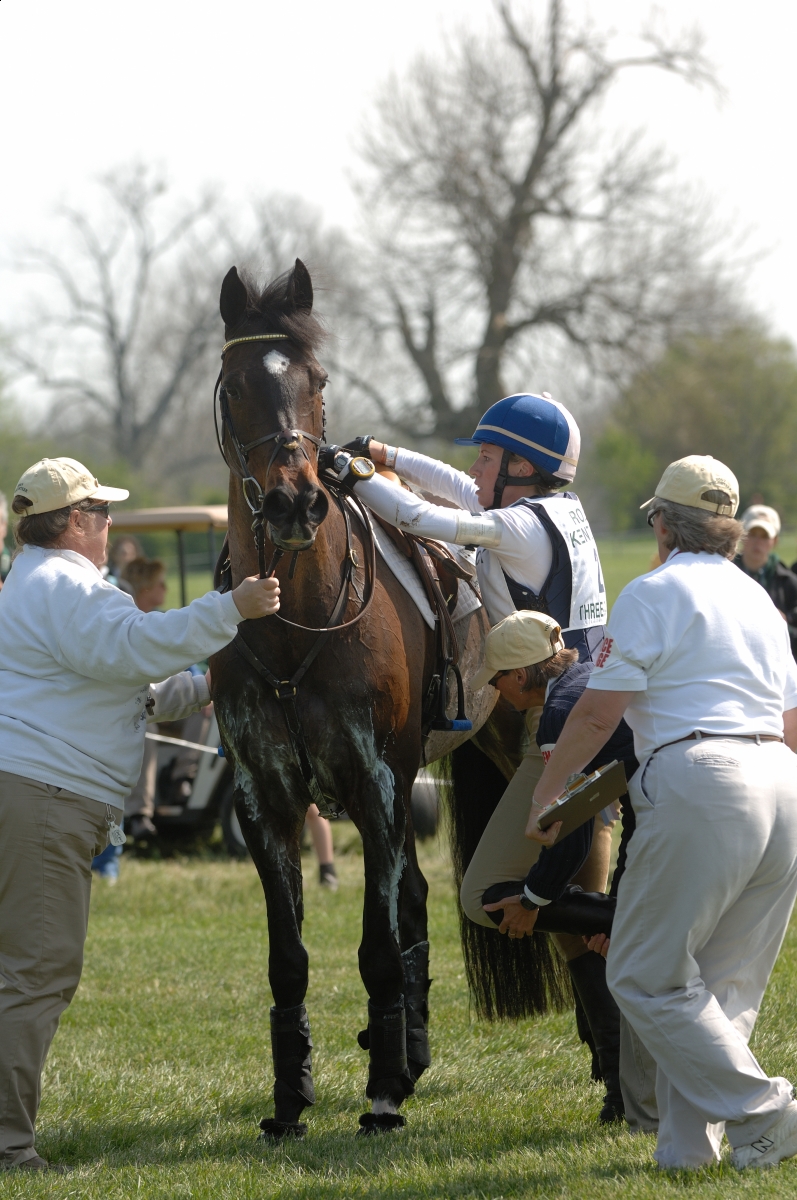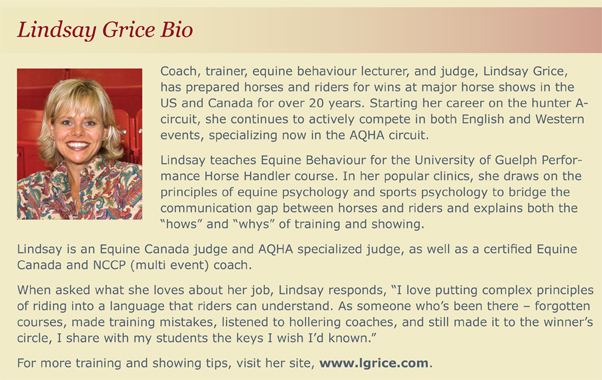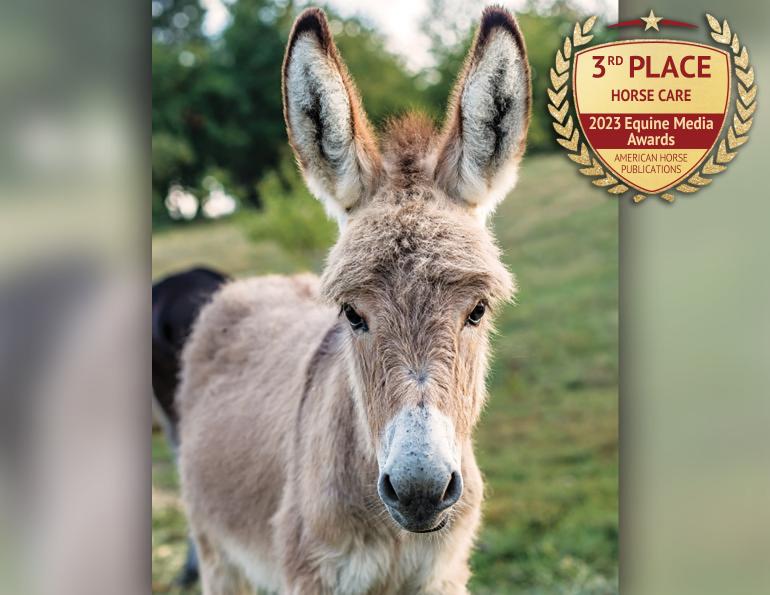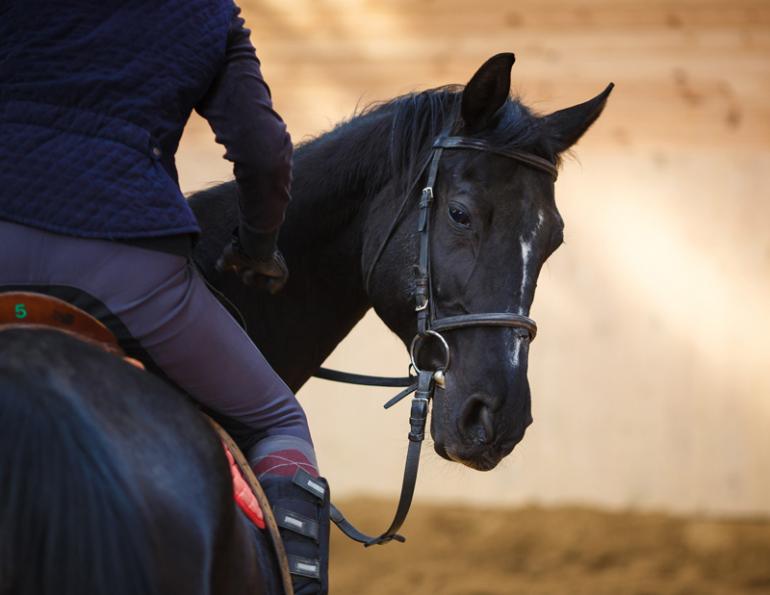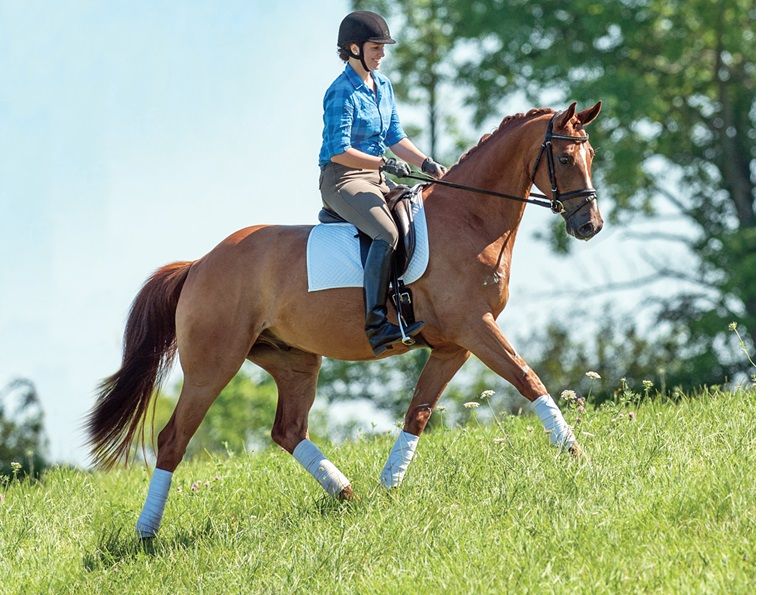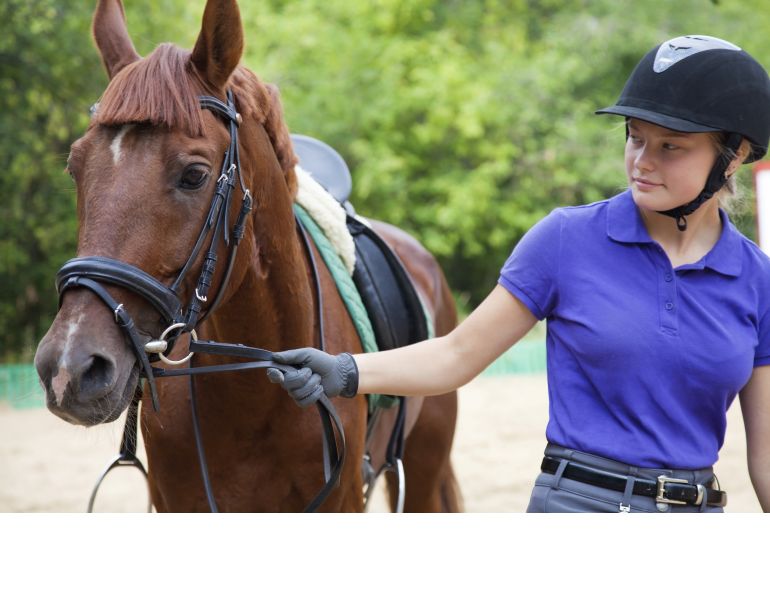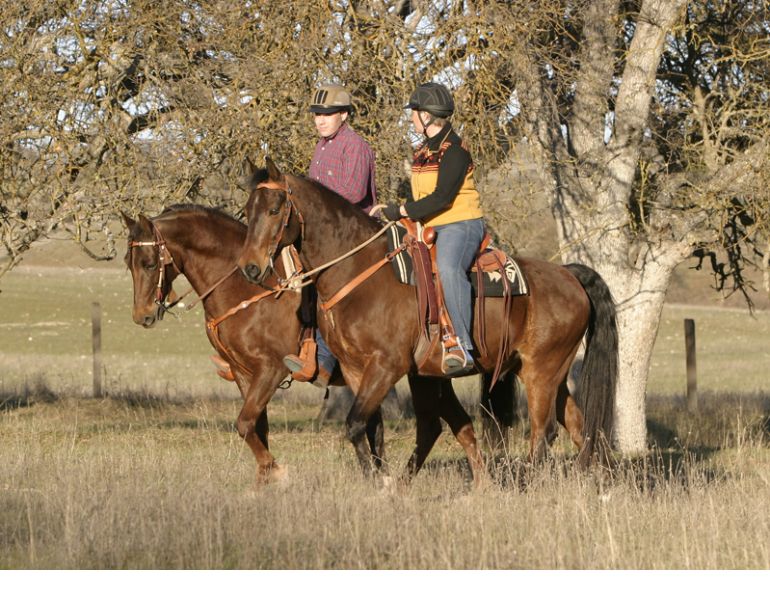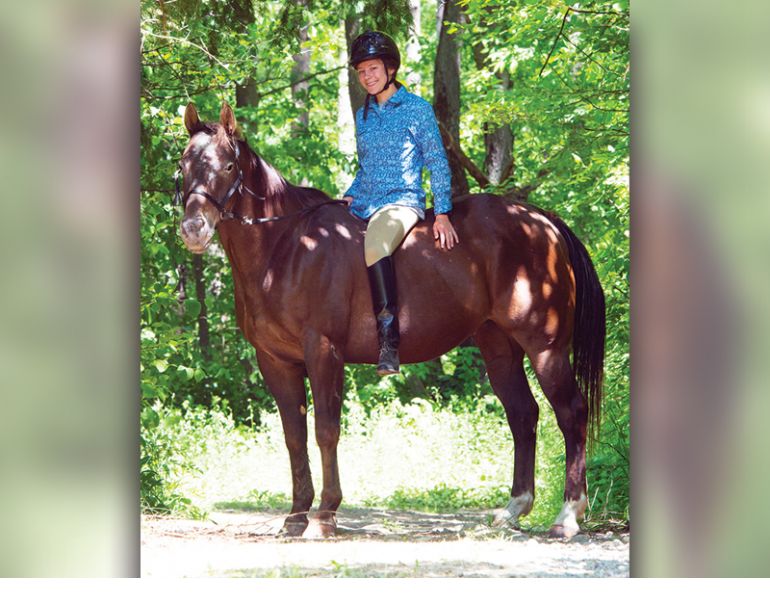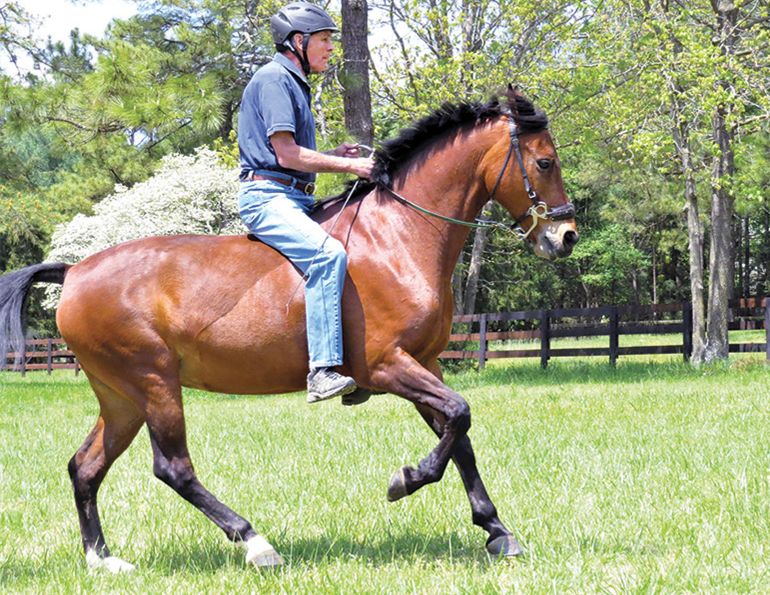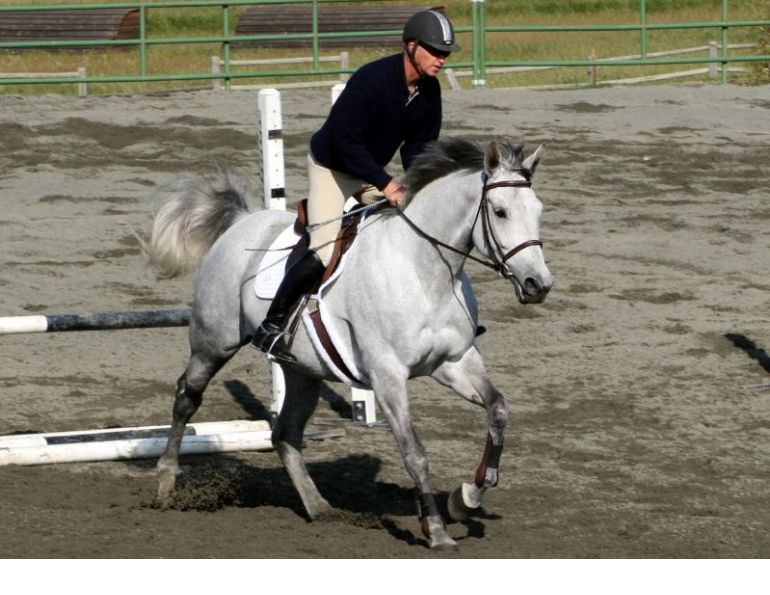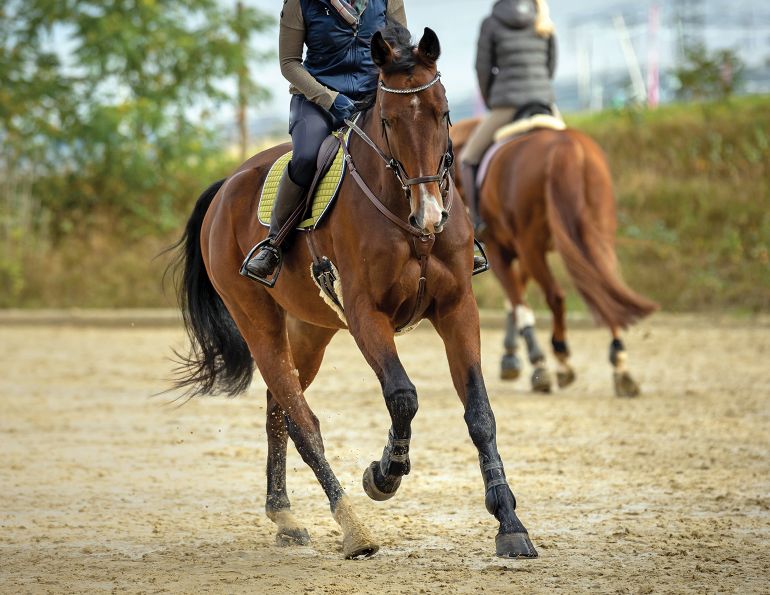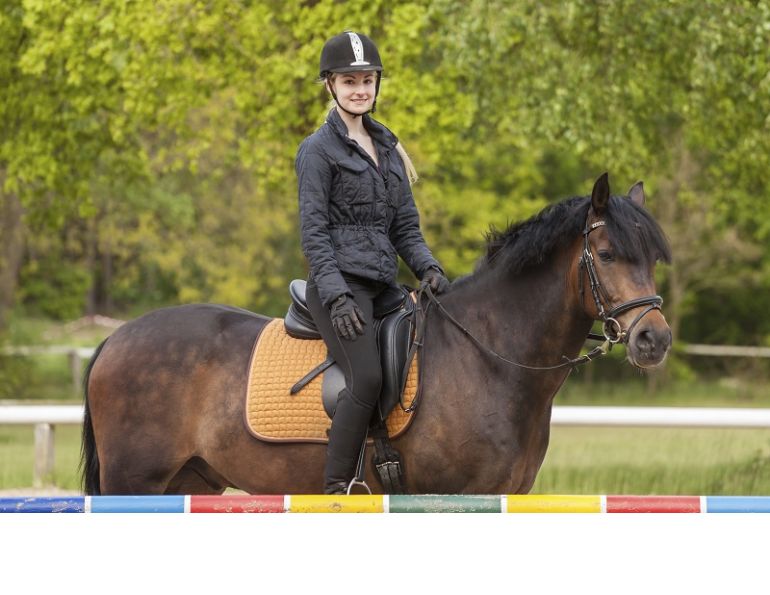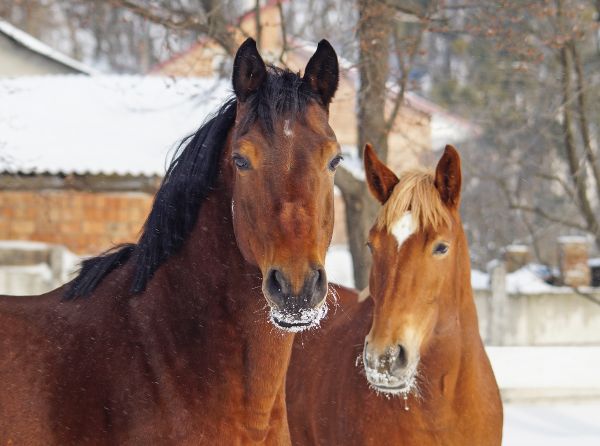By Lindsay Grice
Q At our barn there is a “tongue in cheek” policy that anyone who falls off during a lesson has to buy their instructor a Coke. Is falling off to be taken so lightly? As a novice rider, can I expect to fall off regularly?
A Falling off hurts! It can shake a rider’s confidence so much that many choose to abandon riding altogether, and it can scare their horse, too. I hate to see a student fall off, and I hate to fall off myself, so I do everything I can to minimize risks and lay a strong foundation.
Part of the stretching and growing process comes from taking risks. What a sense of accomplishment it is to successfully face our fears and go for it! But it is the instructor or trainer’s job to determine which risks are appropriate.
In my program, we lay a solid foundation of understanding, and build upon that like a flight of stairs, by challenging the rider or horse with a new skill as they master the step before. For example, we wouldn’t go on to a skill at the canter until it was going well at the trot. Also, like an airplane has all its controls tested before it is allowed to take off, I make sure students have an understanding of the “three P’s” before we fly up to the next level.
|
Photo: Clix Photography |
Pace, Path, and Position
Pace: This is the rhythm and length of stride that the rider decides his horse should move with. The key is that the rider picks the pace and has the skills to adjust his horse, matching it exactly. If a rider is having trouble achieving a slow sitting trot, he’ll be out of control at the canter. If a horse is just grasping a skill at the walk, our eagerness to try it out at a faster pace adds anxiety and risk.
Path: If each section of the horse’s body is compared to a train car, the path is the track, and lateral control describes a rider’s ability, through the use of different aids, to keep each car on that track. Without mastering this control how can you direct your horse to the center of a jump? A horse that “bulges” toward the gate or picks up the wrong lead can be corrected if the rider understands lateral control. Keeping the horse’s body aligned during a spook or buck will prevent the situation from getting completely out of control.
Position: This is my term for having your horse on the bit, in a frame, similar to a coiled spring; it increases maneuverability and responsiveness. All smooth transitions, such as stepping into a canter (without the racing trot beforehand), and making accurate turns all require a measure of collection. The horse is much more focused, elastic, and comfortable to ride when he’s in a frame, minimizing your chances of falling off.
Position also points us to the rider’s position on the horse. A rider who isn’t firmly anchored on the horse with independent control of her hands and legs is heading for a fall. The principles of centrifugal force and inertia we learned about in science class come to life when riders try to eliminate important steps!
After a Fall
If a fall does happen, the old saying is to get right back on. I can go along with this principle ONLY after taking some time to analyze what went wrong. What were the steps that led to the incident? How can it be prevented in the future? Do I need to drop down some steps to rebuild the skills and confidence of my horse and myself?
Becoming an accomplished rider skill by skill may not appeal to thrill seekers, but, like we learned with the story of the tortoise and the hare, slower is faster in the long run!
Main article photo: Robin Duncan Photography - Falling off hurts! After a fall, analyze what happened and why, and take the necessary steps to prevent a similar accident in the future.



